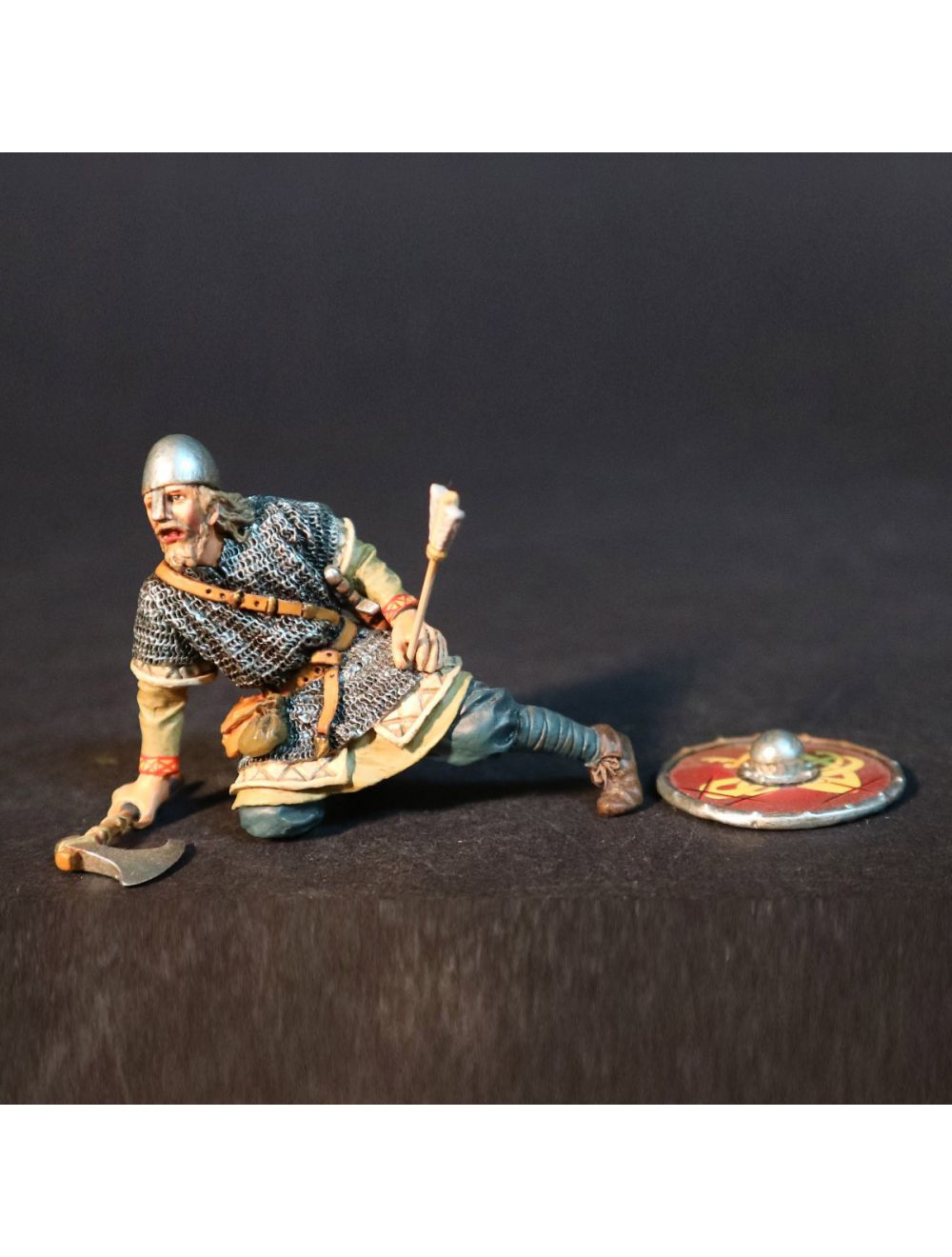JJ-VIK-37A - Viking Warrior
The formation of a shield wall (Skjaldborg in Old Norse) was a popular military tactic that was commonly used in many parts of Northern Europe, especially England and Scandinavia. There were many slight variations of this tactic, but in general, a shield wall was a “wall of shields” formed by warriors standing in formation shoulder to shoulder, holding their shields so that they abut or overlap. Each warrior benefited from the protection of his neighbours’ shields as well as his own. The shield-wall tactic suited inexperienced troops such as the English Fyrd or free peasant, as it did not require extraordinary skill, being essentially a shoving and fencing match with weapons.
The formation of a shield wall (Skjaldborg in Old Norse) was a popular military tactic that was commonly used in many parts of Northern Europe, especially England and Scandinavia. There were many slight variations of this tactic, but in general, a shield wall was a “wall of shields” formed by warriors standing in formation shoulder to shoulder, holding their shields so that they abut or overlap. Each warrior benefited from the protection of his neighbours’ shields as well as his own. The shield-wall tactic suited inexperienced troops such as the English Fyrd or free peasant, as it did not require extraordinary skill, being essentially a shoving and fencing match with weapons.
The first three ranks of the main wall would have been made up of select warriors, such as Huscarls and Thengs, who carried heavier weapons and wore armour. The vast majority of opponents were armed with spears, which they used against the unprotected legs or faces of their opponents. Often soldiers would use their weapons to support each other by stabbing and slashing to the left or the right, rather than just ahead. Short weapons such as the ubiquitous seax could also be used in the tight quarters of the wall.
The tactic was used at the Battle of Stamford Bridge, where the relatively well-armed Saxon army attacked the army of King Harald Sigurdsson of Norway. The Vikings were not wearing as much armour, having left their chain mail behind on the ships and wearing only their helmets, and after a bloody shield wall battle, they broke and fled in panic.
The drawback of the shield-wall tactic was that, once breached, the whole affair tended to fall apart rather quickly. Relatively lightly trained fyrdmen gained morale from being shoulder-to-shoulder with their comrades, but often fled once this was compromised. Once the wall was breached, it could prove difficult or impossible to re-establish a defensive line, and panic might well set in among the defenders.
Although the importance of cavalry in the Battle of Hastings saw the end of the shield wall tactic, massed shield walls would continue to be employed right up to the end of the 12th Century, especially in areas that were unsuitable for large scale mounted warfare, such as Scandinavia, and Scotland.
In the late Middle Ages, the shield was abandoned in favour of polearms carried with both hands, giving rise to pike square tactics.
Scale: 1/30
Material: Pewter alloy
Released Date: August 2022
| Years | Middle Age |
|---|---|
| Gender | Men |
| Role | Dead & Wounded |

 Français
Français

